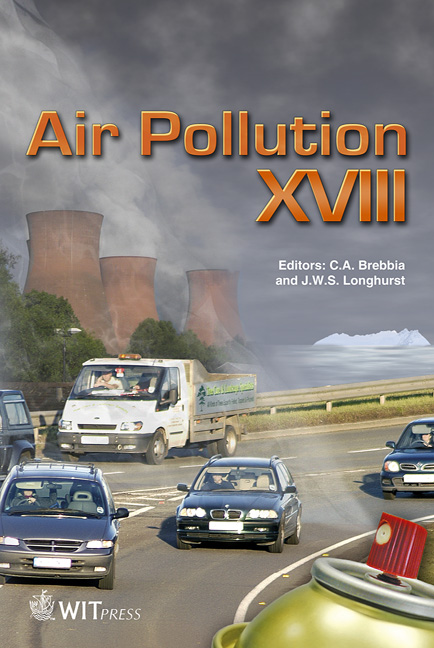Adsorption Of Organic Matter By Inorganic Particulate In Air Pollution
Price
Free (open access)
Transaction
Volume
136
Pages
9
Page Range
419 - 427
Published
2010
Size
394 kb
Paper DOI
10.2495/AIR100371
Copyright
WIT Press
Author(s)
V. Villas-Boas, L. Moratelli, I. Nascimento, R. M. Dallago, R. Dellanora, A. L. Loureiro, P. Artaxo, E. Ribeiro Lovatel, N. C. Vieceli & E. Müller Cardoso
Abstract
The main objective of this work was the semi-quantitative evaluation of the influence of the concentrations of fine and coarse particulate matter (PM2.5 and PM10) and black carbon (BC) on the organic compound concentrations in the atmosphere of Caxias do Sul, a city in Rio Grande do Sul, the southernmost state of Brazil. The collection of the samples was carried out between August of 2007 and January of 2008. The periodic replacement of the cartridges and sampling filters was performed every other day (48 h sampling). An active sampler was used for the collection of the inorganic particulate matter, that means, PM2.5 and PM10 were sampled using stacked filter units that collect fine (d < 2.5 μm) and coarse (2.5 μm < d < 10 μm) particulate matter. The organic material was collected by a previously treated cotton cartridge. Both samplings (inorganic and organic matter) were performed at the same time and sampling point, with division of the air flux. The air was forced to pass through the two samplers by a vacuum pump. The inorganic particulate matter was characterized by gravimetry and reflectance. The tentative identification of the organic compounds was obtained by gas chromatography with mass spectrometry detection (GC-MS). The preliminary results suggest an inverse relation among the PM10 concentration and the amounts of some organic compounds like 1H-indene, neridol and diethyl hexylphthalate. On the other hand, the maximum quantity of eburnamonine was detected at the same time as the maximum concentrations of
Keywords
air pollution, organic matter, particulate, GC/FID





